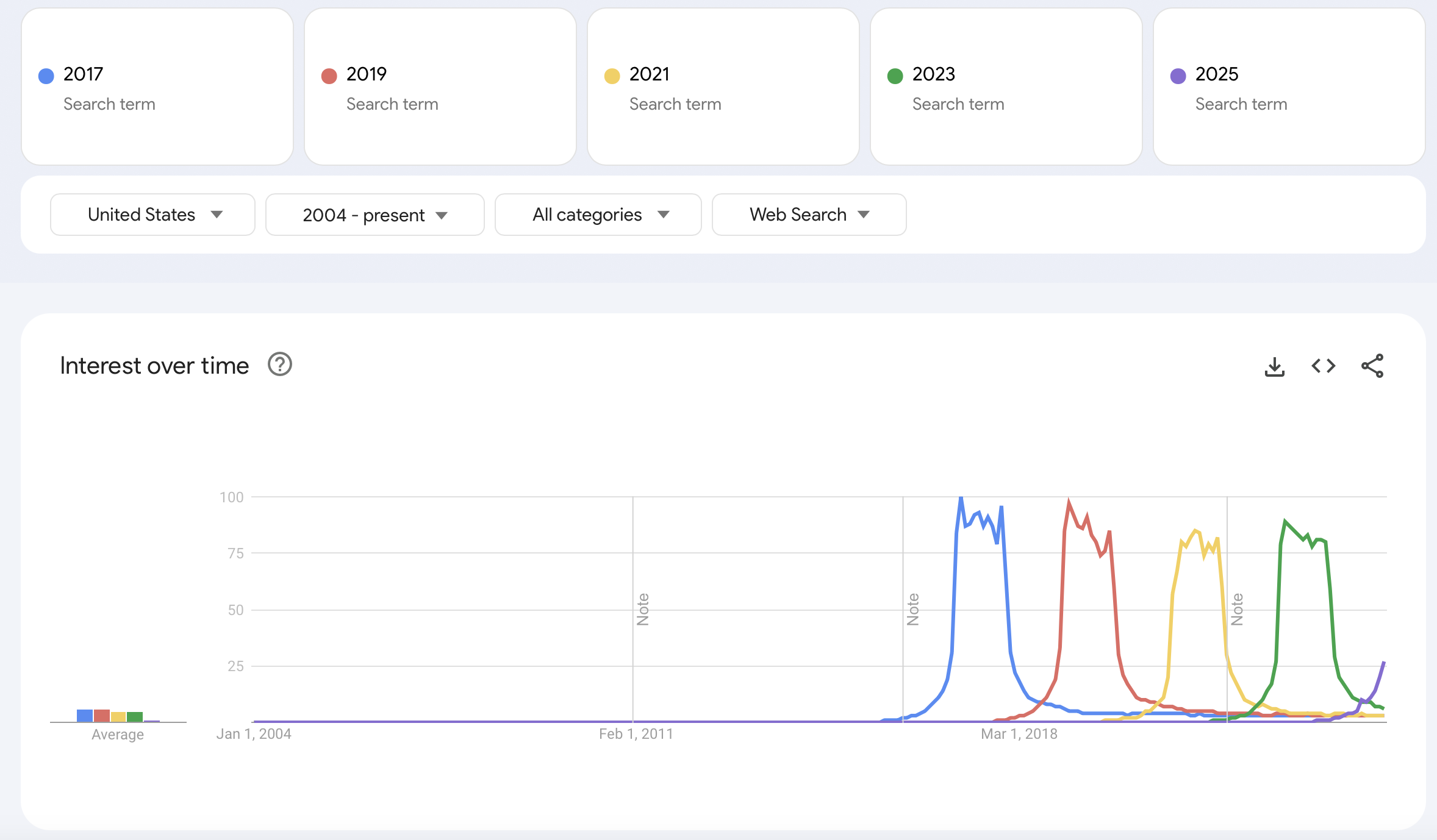The 2025 Automotive Industry

Every year, search terms in Google Trends reveal a fascinating pattern: the current year is only relevant as a search query during that year. By the time January 1 rolls around, interest shifts to the new year, leaving the past year to fade into obscurity. This phenomenon reflects a deep-rooted focus on the present and the future, and nowhere is this cyclical anticipation more evident than in the automotive industry. As we approach 2025, it’s worth asking: Is the auto industry the primary driver of this annual obsession with "the new"?
Annual Updates: Fueling the Yearly Cycle
The automotive industry has long been synonymous with the model year cycle—a tradition where manufacturers release updated versions of their vehicles annually. This strategy not only keeps consumers engaged but also reinforces the idea that the newest model is inherently superior. This practice aligns closely with the fleeting relevance of years in search trends, where each year becomes a marker for progress and innovation.
- Consumer Demand: Regular updates fuel excitement and create an incentive to upgrade to the latest model.
- Technological Evolution: Each year’s iteration often incorporates advancements in safety, efficiency, and design.
- Regulatory Compliance: Frequent updates ensure adherence to changing emissions and safety standards.
However, this cycle—while aligning with the "out with the old, in with the new" mindset—is increasingly being challenged by changing consumer expectations and disruptors like Tesla.
Tesla’s Continuous Improvement Model: Breaking the Cycle
Tesla’s approach to car manufacturing turns the traditional model year paradigm on its head. Rather than tying innovations to annual updates, Tesla adopts a software-first, continuous improvement strategy that reflects the tech industry’s model of constant evolution:
- Over-the-Air (OTA) Updates: Tesla regularly rolls out OTA updates, allowing customers to access new features and improvements without visiting a dealership. From performance boosts to enhanced driver-assistance capabilities, these updates keep vehicles at the cutting edge year-round.
- No Model Year Distinctions: Tesla’s vehicles, like the Model 3 and Model Y, do not adhere to the traditional annual refresh model. Instead, improvements are introduced seamlessly throughout the production cycle, blurring the lines between model years.
- Data-Driven Development: Tesla collects vast amounts of real-world driving data, using it to refine its Autopilot and Full Self-Driving (FSD) systems, ensuring continuous enhancement.
By eschewing the annual update cycle, Tesla not only challenges traditional industry norms but also disrupts the cultural link between years and progress. Their vehicles improve over time, making the specific "year" of manufacture increasingly irrelevant to the consumer experience.
The Rise of EV Market Share
The push for electrification is reshaping the automotive industry, but it would be premature to claim that EV dominance is fully realized. By 2025, EVs are projected to gain a growing share of the market, offering consumers an additional option rather than a wholesale replacement of traditional gas-powered vehicles. While falling battery costs, expanded charging infrastructure, and government incentives are driving adoption, many buyers still opt for internal combustion engine (ICE) vehicles due to factors like price, convenience, and familiarity.
- Diverse Preferences: Automakers such as Tesla, Rivian, Hyundai, and BMW are rapidly electrifying their lineups, introducing EVs that cater to a wide range of preferences.
- Advances in Battery Technology: Innovations like solid-state batteries promise faster charging, longer ranges, and improved safety, making EVs increasingly competitive.
Challenges Ahead
While the industry is evolving rapidly, challenges remain:
- Supply Chain Constraints: The shift to EVs has strained supplies of critical materials like lithium and cobalt.
- Consumer Education: Many consumers remain unfamiliar with EV technologies and the benefits of software-driven vehicles.
- Regulatory Hurdles: As autonomy becomes a reality, regulatory frameworks need to catch up.
Conclusion
As 2025 approaches, the automotive industry’s link to the fleeting relevance of years is both a strength and a limitation. While legacy automakers strive to modernize their offerings and capitalize on annual cycles, Tesla’s pioneering approach challenges the very foundation of this model. By treating vehicles as dynamic, evolving platforms, Tesla shifts the focus from "what year" to "what’s next," disrupting the industry’s traditional relationship with time. As Google Trends reminds us of our obsession with the present, the automotive industry’s journey into 2025 reflects a broader shift toward continuous innovation over time-bound progress. The road ahead is as unpredictable as it is transformative.
